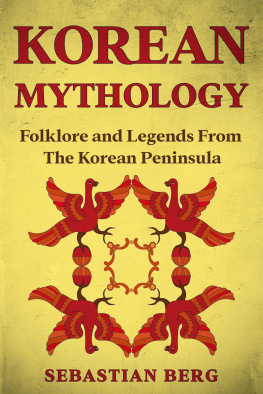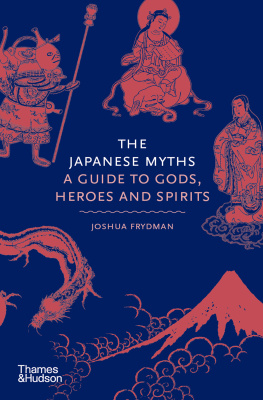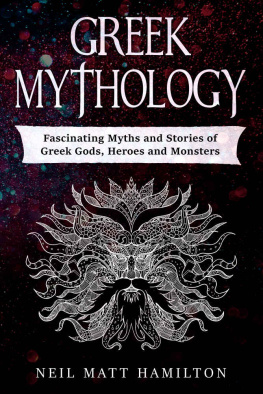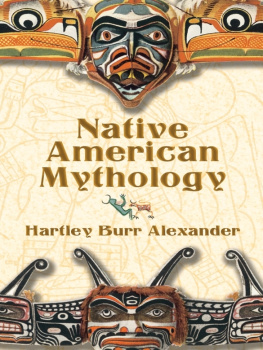
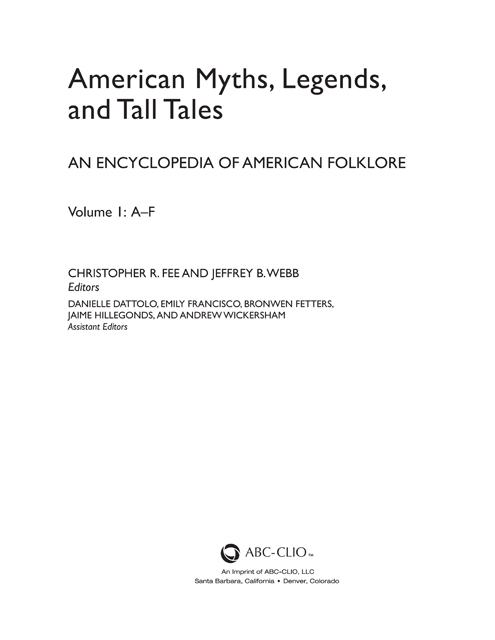
Copyright 2016 by ABC-CLIO, LLC
All rights reserved. No part of this publication may be reproduced, stored in a retrieval system, or transmitted, in any form or by any means, electronic, mechanical, photocopying, recording, or otherwise, except for the inclusion of brief quotations in a review, without prior permission in writing from the publisher.
Library of Congress Cataloging-in-Publication Data
Names: Fee, Christopher R., editor.
Title: American myths, legends, and tall tales : an encyclopedia of American folklore / Christopher R. Fee and Jeffrey B. Webb, Editors ; Danielle Dattolo, Emily Francisco, Bronwen Fetters, Jaime Hillegonds, and Andrew Wickersham, Assistant Editors.
Description: Santa Barbara, California : ABC-CLIO [2016] | Complete in 3 volumes.
Identifiers: LCCN 2015050529 | ISBN 9781610695671 (set : acid-free paper) | ISBN 9781440845727 (volume 1 : acid-free paper) | ISBN 9781440845734 (volume 2 : acid-free paper) | ISBN 9781440851377 (volume 3 : acid-free paper) | ISBN 9781610695688 (ebook set)
Subjects: LCSH: FolkloreUnited StatesEncyclopedias. | United StatesSocial life and customsEncyclopedias.
Classification: LCC GR105 .A665 2016 | DDC 398.2097303dc23
LC record available at http://lccn.loc.gov/2015050529
ISBN: 978-1-61069-567-1 (set)
ISBN: 978-1-4408-4572-7 (vol. 1)
ISBN: 978-1-4408-4573-4 (vol. 2)
ISBN: 978-1-4408-5137-7 (vol. 3)
EISBN: 978-1-61069-568-8 (set)
20 19 18 17 16 1 2 3 4 5
This book is also available as an eBook.
ABC-CLIO
An Imprint of ABC-CLIO, LLC
ABC-CLIO, LLC
130 Cremona Drive, P.O. Box 1911
Santa Barbara, California 93116-1911
www.abc-clio.com
This book is printed on acid-free paper 
Manufactured in the United States of America
Contents
Preface
American Myths, Legends, and Tall Tales: An Encyclopedia of American Folklore provides a comprehensive introduction to folklore in the United States. It offers a guide to the stories people tell and have told for centuries within the diverse array of cultures native to the region, as well as those cultures appearing in the United States since its founding as a nation. Many of these stories are retold here, along with useful historical context and accounts of how the stories have been adapted and reshaped over time. Readers will encounter people, places, and storybook characters theyve heard about since childhood, like Paul Bunyan and Brer Rabbit, but theyll also discover many things that are new and unfamiliar. This three-volume encyclopedia is not meant to be the final word on its numerous topics, but rather to provide beginning and advanced students, as well as interested general readers, with the entry points and pathways they need to pursue further exploration and discovery.
Storytelling is a basic human impulse and every culture compiles traditions of storytelling across many generations. In recognition of this fact, the encyclopedia embraces not only Native American mythology and folklore, but also the many traditions that were carried to North America by immigrants from Europe, Asia, Africa, the Middle East, and Oceania. As such, the collection includes a sampling of Asian American myths and legends right alongside the myths of the Lakota and Cherokee, and stories passed along within African American families and communities. By the same token, the encyclopedia addresses topics that are more contemporary in nature, like popular conspiracy theories, urban legends, and even superheroes. When set alongside one another, these seemingly diverse strands of popular storytelling in the United States reveal a number of common threads. As they teach us particular things about their unique cultures of origin, they also address universal human fears, struggles, values, and aspirations.
The encyclopedia has a number of key features, including an introduction to the subject of myth and folklore, more than 490 individual entries, more than 90 primary sources, a chronology, a bibliography, and a detailed subject index. The entries also offer See also cross-references to related entries and primary documents, as well as bibliographies of relevant print and nonprint information resources. The entries range from individual characters and stories to broad themes like Women in Folklore and general topics like Creation Stories of the Native Americans. It is the collaborative work of more than 150 contributors, most of whom are university-based researchers who have completed postgraduate degrees in their fields of specialization. They are literature scholars, research librarians, historians, anthropologists, folklorists, and professional writers. Their work draws from academic studies of myth and folklore and their own personal investigations and experiences. What readers will find inside these volumes are American myths, legends, and folktalesstories of heroic deeds and terrible tragedies, as well as tales of strange monsters, dangerous criminals, haunted forests, and alien encounters. In other words, the mysterious things in the world and beyond that sometimes frighten us, but also spark our curiosity and awaken our imagination.
Acknowledgments
The editors would like to thank our capable and hard-working team of assistant editors Danielle Dattolo, Bronwen Fetters, Emily Francisco, Jaime Hillegonds, and Andrew Wickersham. Thanks also are due to our sponsoring institutions, especially the Provosts Office at Gettysburg College and the Office of the Vice President of Academic Affairs at Huntington University. Our colleagues in the Department of English at Gettysburg College and the Department of History and Political Science at Huntington University provided kind assistance at different points in the project. We are especially indebted to Linda Miller and Jody Rosensteel at Gettysburg College for clerical and administrative support, and to the professional staff at Huntington Universitys RichLyn Library for their bibliographical expertise. Part of the project was completed with release time and financial support provided by the Edwina Patton Chair in the Arts & Sciences at Huntington University, and the American Folklife Center at the Library of Congress offered support to several of our contributors to ensure thoroughness and accuracy. Finally, the editors would like to thank our many contributors for devoting their time, energy, and scholarship to this project, and the editorial staff at ABC-CLIO, namely Michael Millman, Barbara Patterson, and John Wagner, for their tireless work in bringing it to completion.
Introduction
American Myths, Legends, and Tall Tales: An Encyclopedia of American Folklore collects together a variety of myths, legends, and tall tales, but these are terms that require a little explanation. Myth is an English word derived from the Greek mythos, which refers to a story. In common American usage, myth most often refers to ancient stories about the origin of the universe and all the living things on earth, which are viewed in modern times as literature or fairy tales. For most readers in the modern world, these ancient stories have lost their sacred and religious quality. Myth is also often used as a shorthand term for patent falseness, as in the common term urban myth, or as in the title of the popular show Mythbusters. In both of these senses, as commonly understood by many Americans, myth implies something imaginary or untrue that someone in the distant past formerly believed, but which is no longer believable. It is no surprise, then, that many Americans take offense if their personal beliefs or the lore transmitted through their religious systems are referred to as
Next page

![Christopher R. Fee - Conspiracies and Conspiracy Theories in American History [2 Volumes]](/uploads/posts/book/429085/thumbs/christopher-r-fee-conspiracies-and-conspiracy.jpg)

